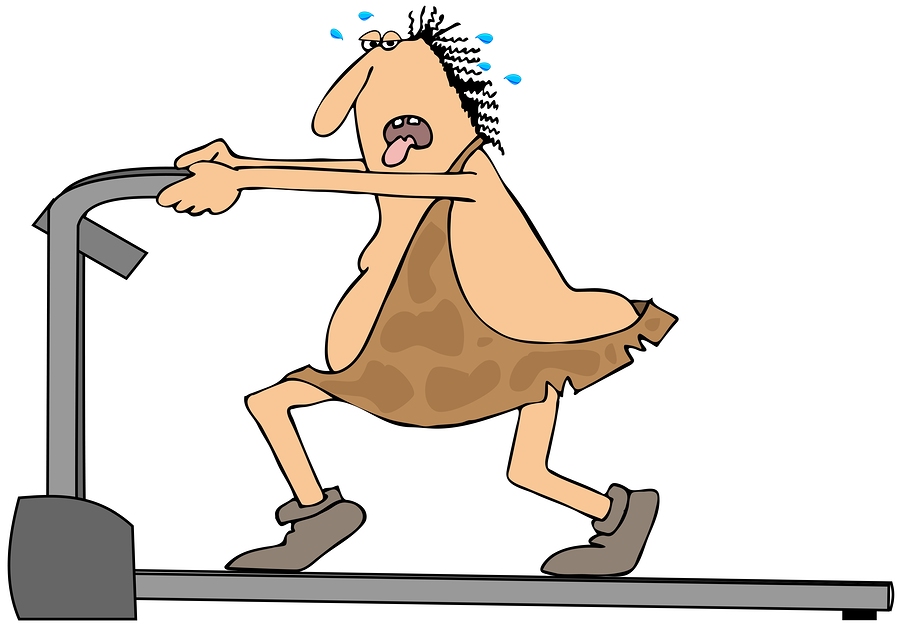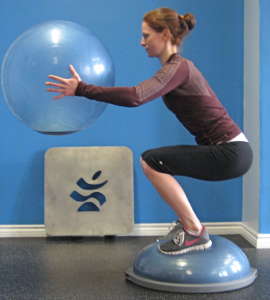

Nicole Lark, BHS, PTS, TSCC-3
The Acupuncture Turning Point collaborates with Nicole and Len, owners of Breathe Fitness, to help our clients be at their best.
Go to the Breathe Fitness website to find out more…
by Nicole Lark BHK, PTS, TSCC-3
In A.J. Jacobs third New York Times bestsellers novel “Drop Dead Healthy: One Man’s Humble Quest for Bodily Perfection,” he dedicates more than a year of his life to become as healthy as humanly possible, tackling everything from working (i.e. writing his book) on a treadmill to revamping his diet, sleep schedule, sex life, posture and exercise regimen.
Jacobs sifts through the abundance of research literature and cultural trends to decide what exercise programs he will attempt to integrate into his life during his year long quest. One of the more niche endeavours was 39 year old Erwan Le Corre’s Natural Movement® (MovNat) methodology, a.k.a. ‘the Caveman’ workout. It is an approach that has been gaining traction since 2009 and is based on the core principles that human beings are born to use full range movement, to be outside with nature, and that chronic pain, immobility, depression and lack of vitality are NOT normal and ARE avoidable. Our survival once depended on it! Similar to our hunting and gathering ancestors, dynamic locomotive challenges should all be a part of our daily lives – activities such as walking, running, jumping, balancing, crawling, climbing, and swimming. In addition, practicing manipulative motor skills such as lifting, carrying, throwing, and catching (i.e. “physical literacy” skills) should also be included.
With his humorous wit, Jacobs pokes fun at himself when he is instructed to run bare-foot elegantly like an animal in the wild, as he feels the exact opposite of natural, or when bare-chested they clamber along a 40-foot fallen log and are told to imagine they are moving like a tiger stalking prey, and he keeps slipping, having hunched shoulders, and ends up ‘scurrying like a monkey’ rather than being graceful like a cat. Afterwards, Jacobs concludes that the ‘caveman workout shouldn’t be dismissed.’ In addition to avoiding boredom (of the slogging, monotonous variety which most people have experienced within a typical gym setting), he advocates the adventure-style workout and the well-documented benefits of being physically active in nature.
The Cavemen workout (a.k.a. the Paleo workout) may be slightly intense for most people; however, the general concept being following is something to consider. I incorporate this general principle into all of my client’s workouts. I am not merely trying to help him or her lift more weight to become stronger, or to have improved cardiovascular functioning; rather, I am constantly implementing exercises and skills to encourage full-range of motion and movements (unloaded and then eventually loaded), which are performed in all planes of motion (sagittal, frontal and transverse), and which are multi-directional. If you consider the demands of daily living or participating in a sport, we do not move only in one plane (e.g. walking is in the sagittal plane only). Rather, we are constantly asked to move forwards, backwards, sideways, up, down, and to twist, and our ability to execute all forms of movement will have a lasting affect on our functionality and performance.
Historically, our ability to run (jog or sprint), jump, throw, crawl, etc., was paramount to our survival; however, in today’s society all physical elements of survival have been virtually eliminated. BUT, our capacity to move with ease and not experience pain is still vital for our independence (especially as we age) and quality of life. Imagine not being able to bend down and tie your own shoes, or pick-up a small child from the ground, or quickly dart for the bus, let alone cross the road in the allotted time the walk sign is on. These are real-life examples that the majority of people should be able to perform when required and without any difficulty or hesitancy. A lifestyle of sitting and not moving can limit our ability to execute basic movement patterns – being predominantly sedentary is not conducive to living at full-function and at a desired capacity.
Exercising barefoot outside with no shirt on (I am unsure of what the women wear on this Caveman workout plan?) may be a possibility for some, but it misses the point perhaps. And it is less realistic to follow this style of ‘training’ year-round when living in a northern climate with bitterly cold temperatures and snow. Some get the cross-country skis or snowshoes out, but the next best option may be going to the gym (sigh – for some). However, the gym experience does not have to degenerate down to a set of boring, non-functional, and single-joint exercises, such as performing a bicep curl or sitting at a machine.
Instead, the gym can incorporate many of the demands the Paleo’s implement with their workouts. Movements that are multi-directional and multi-planar, with changing and evolving demands on secondary fitness characteristics such as balance, coordination, agility, speed, quickness and reaction skills can all be integrated to make each workout physically and mentally challenging. The controlled environment found in the gym can also be tailored to resemble a more complex environment which correlates more closely to the everyday demands we encounter either in life or sport. A gym workout may more efficiently incorporate all of the above fitness characteristics in a more balanced manner than even great whole-body sports like indoor soccer or squash. Furthermore, the somewhat more predictable environment and programming and monitoring components in a gym workout may be good for people just getting back into exercise or help those who are prone to injury stay healthy.
People tend to get drawn into a specific exercise regimen or diet after hearing or reading that this program or that program is the ‘best option’. I encourage people to look at the facts and amalgamate the differing methods to create a balanced approach that fits within their lifestyle. I am not going to tell my clients they should be running outside with bare feet and not wear a shirt; however, I would encourage them to exercise out-of-doors when it is safe and reasonable to do so. Nature has a profound effect on our physiological and mental health. Next time you go to exercise think of how you can implement new ways of moving to closer resemble the demands of life. The more variety you add, and the more often you change the multi-faceted demands on your body, the better adapted you will become to living in today’s jungle – minus eating raw meat and swinging from the occasional vine.




